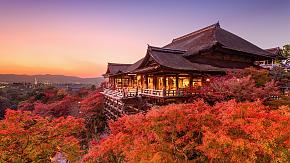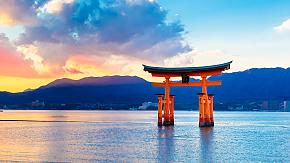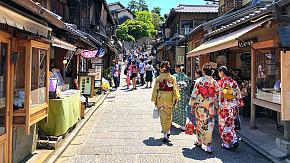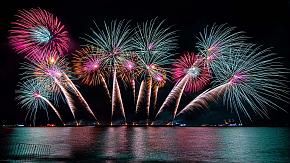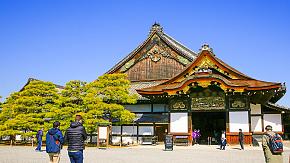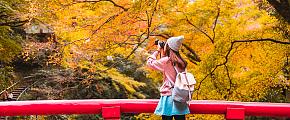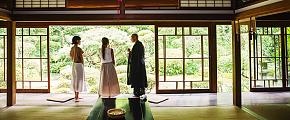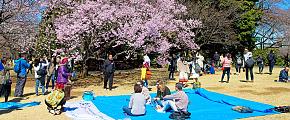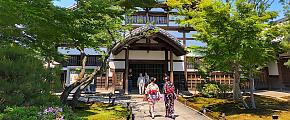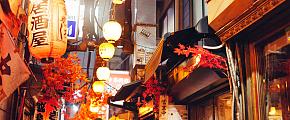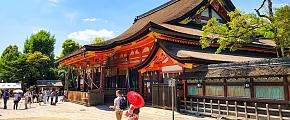10 Best Temples & Shrines to Visit in Japan
There are many Buddhist temples to visit in Japan, which is about 77,000, as well as Shinto shrines in unexpected numbers of 81,000, offering not only wonderful cityscapes but also good chances to get closer to Japanese culture during your visit. Check out the top shrines and temples to visit in your Japan tour for some eye-catching social media moments.
Senso-ji Temple, Tokyo
With a history spanning over 1,300 years, the Buddhist temple Senso-ji stands as a symbol of the vibrant Asakusa area in Tokyo and is one of Japan's most famous tourist attractions.
You can enter through the iconic Thunder Gate (Kaminarimon) and stroll along Nakamise, a traditional shopping street filled with gourmet food stalls and souvenir shops, before reaching the temple itself.
Prayers are a central part of the Senso-ji experience. Millions visit the temple to seek blessings for a prosperous new year or participate in the grand Sanja Matsuri festival, which offers a unique chance to experience Japan's festive traditions.
Join the locals in purifying your body with sacred smoke before making a prayer. Place small coins in the offering box, silently express your wishes, and, for just 100 yen, try drawing an "omikuji" (paper fortune) to discover insights about your recent luck.
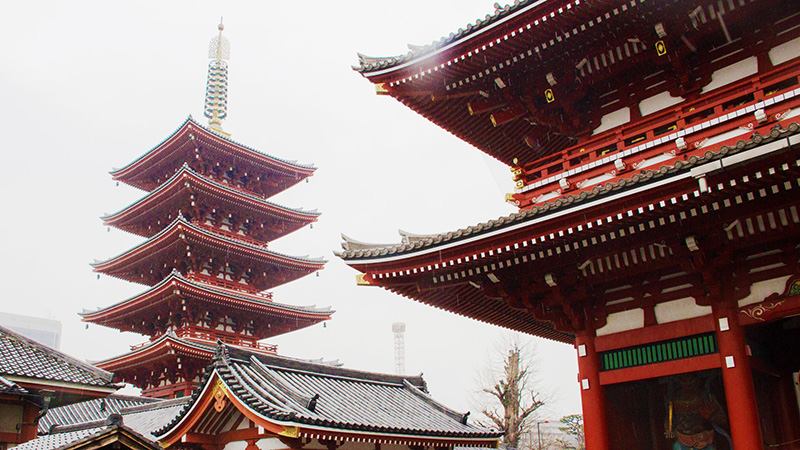 Senso-ji Temple
Senso-ji Temple
Meiji Jingu, Tokyo
Meiji-Jingu, a renowned Shinto shrine established in 1920, is dedicated to Emperor Meiji and Empress Shoken. Located just a 10-minute walk from JR Harajuku Station, it offers a peaceful retreat within Tokyo.
Surrounded by lush greenery, this forest shrine provides a serene escape from the bustling city. If you visit in mid-June, you'll be treated to the sight of irises in full bloom, adding to the shrine's charm.
The shrine features several notable highlights, including Japan's largest Myojin torii, crafted from a 1,500-year-old cypress, the majestic main shrine, and Kiyomasa's Well, believed to bring good luck when used as a mobile wallpaper. Another unique attraction is Kameishi, a turtle-shaped rock symbolizing family happiness, marital bliss, and home safety.
Take your time to explore and discover these hidden treasures scattered throughout the tranquil woods in the heart of Tokyo.
 Meiji Shrine
Meiji Shrine
Kiyomizu-dera, Kyoto
Kiyomizu-dera is a magnificent Buddhist temple to visit in Kyoto, known for its sprawling grounds that typically take about an hour to explore, even during the off-season. With a history spanning over a thousand years, it stands as one of Kyoto's most iconic and historically significant landmarks.
The temple's centerpiece is the main hall, Kiyomizu Butai, a national treasure perched on a small cliff. The hall's wooden stage rises 18 meters above the ground, offering breathtaking panoramic views of Kyoto. These vistas are particularly stunning during the cherry blossom season in spring and the vibrant fall foliage.
Another highlight is the 31-meter-tall three-storied pagoda, the largest of its kind in Japan. Its vivid red exterior is both striking and memorable. During special nighttime events, the pagoda and other parts of the temple are illuminated, creating a magical and enchanting atmosphere that adds to its timeless appeal.
Fushimi Inari Taisha, Kyoto
Fushimi Inari Taisha, famous for its thousands of vermilion torii gates forming a striking tunnel, is one of Kyoto's most iconic shrines.
Dedicated to the Shinto deity of rice, agriculture, and business, this historic mountainside shrine has been cherished by locals for generations. Visitors come to pray for prosperity and success, while grateful businesspeople often donate torii gates to express their thanks, adding to the ever-expanding path of gates winding through the forest.
If you're inspired to make a wish at this renowned shrine, plan to spend half a day exploring its offerings. Enjoy a leisurely hike to the inner shrine, guarded by statues of fox messengers. Along the way, pass through the vibrant torii tunnel, stop at smaller shrines, or visit a local restaurant to savor kitsune udon (fried tofu noodle soup), a dish said to be favored by the fox spirits. Cap off your journey with a panoramic view of Kyoto, surrounded by a sense of tradition and hope.
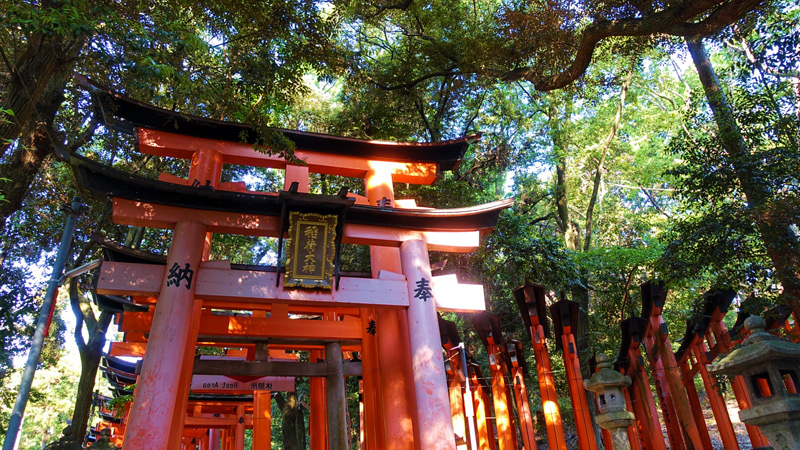 Vermilion Torii Gates at Fushimi Inari Taisha
Vermilion Torii Gates at Fushimi Inari Taisha
Itsukushima Shrine, Hiroshima
Itsukushima-Jinja, a UNESCO World Heritage Site, is a coastal Shinto shrine located on Miyajima Island in Hiroshima. Dedicated to the goddesses of the sea, the shrine is a place where you can pray for various blessings, including safe navigation, traffic safety, family well-being, academic success, business prosperity, and marriage.
The iconic floating gate is one of the largest wooden torii in Japan, standing 16.6 meters tall, 24.2 meters wide, and weighing approximately 60 tons. Remarkably, it is not anchored in the seabed but stands solely by its own weight.
The entire island of Miyajima and the surrounding sea are considered sacred, with the torii gate symbolizing the entrance to this hallowed area. You can admire the gate from the land or approach it up close. During low tide, it is even possible to walk near the torii gate.
A visit to Itsukushima Shrine typically takes about 30 minutes. However, to experience the torii gate both at high and low tide, plan to spend half a day on the island.
Hase-dera, Kamakura
Hase-dera, also known as Hase-kannon, is a renowned Buddhist temple in Kamakura famous for its towering eleven-headed wooden statue of Kannon, the goddess of mercy.
Dating back to the Kamakura period, its charming corridors, supported by weathered wooden pillars, have long provided shelter for worshipers during rain and snow. The main hall houses the magnificent statue of Kannon, with each of her eleven heads symbolizing a different aspect of the journey to enlightenment. On the grounds, you can also find rows of small stone statues of Jizo, the guardian deity of children.
Hase-dera is celebrated as a "flower temple," especially during June and July when its hydrangeas are in full bloom. In autumn, the grounds come alive with the vibrant colors of maple leaves, making it an equally enchanting spot for fall foliage viewing.
Ise Jingu Shrine, Mie
Ise-Jingu in Mie is a collective term for 125 Shinto shrines in the area, with the two main shrines being the Inner Shrine (Naiku) and the Outer Shrine (Geku). The Outer Shrine is dedicated to Toyoke Okami, the guardian deity of essential industries such as clothing, food, and housing. The Inner Shrine enshrines Amaterasu Omikami, the supreme deity of Japan and the ancestress of the imperial family.
Just outside the Naiku gate, Oharai-machi and Okage-yokocho are bustling streets filled with souvenir shops and restaurants, offering a lively atmosphere to complement your spiritual visit.
Given the vast area of Ise-Jingu, one of the best ways to experience it is to immerse yourself in its natural surroundings, wandering leisurely through the forested precincts. However, unlike other shrines, Ise-Jingu does not offer fortune slips. This tradition stems from ancient times when traveling to Ise-Jingu was a rare and arduous journey; simply arriving at the shrine was considered a profound blessing in itself.
Nikko-Toshogu, Tochigi
Nikko-Toshogu, a registered UNESCO World Heritage Site, is renowned for its exquisite architecture and artistic treasures. It enshrines Tokugawa Ieyasu, the first shogun of the Edo Shogunate, and beautifully blends Shinto and Buddhist elements in its design.
A highlight is the Yomeimon Gate, a designated National Treasure often hailed as one of Japan's most beautiful gates. Its vibrant carvings depict scenes from Japanese folklore. Among its 12 supporting pillars, one is intentionally placed upside down to symbolize that the structure is "unfinished". Spotting this inverted pillar adds an engaging element to your visit.
Another iconic feature is the "Three Wise Monkeys" carving on the Shinkyusha, illustrating the proverb "see no evil, speak no evil, hear no evil." Additionally, the Nemuri Neko (Sleeping Cat) sculpture, located at the secret gate of the East Corridor, is a must-see. The small yet charming cat is surrounded by peonies and appears to rest peacefully under sunlight, embodying the spirit of Nikko (sunshine).
Izumo Taisha, Shimane
Located in Shimane in western Japan, Izumo-Taisha is a renowned Shinto shrine that symbolizes the region of Izumo, often referred to as the home of Japanese mythology. With a history spanning over a thousand years, this majestic shrine offers a profound and awe-inspiring atmosphere, making it a destination worth visiting at least once in a lifetime.
Izumo-Taisha follows a unique worship ritual distinct from other shrines. Typically, visitors purify their hands and mouths at the chozuya (purification fountain) before heading to the worship hall. However, at Izumo-Taisha, it is customary to first visit the Haraesha, a small shrine located on the right side of the approach after passing through the Otorii. The Haraesha enshrines four gods and is believed to help cleanse impurities accumulated in daily life, ensuring a more respectful and purified visit.
When praying at Izumo-Taisha, follow the traditional custom of bowing twice, clapping your hands four times (a unique ritual at this shrine), and bowing once again. This practice reflects the deep reverence and distinct spiritual significance of this sacred site.
Mitsumine Jinja, Saitama
Mitsumine-Jinja, a Shinto shrine nestled in the mountains of Okuchichibu, Saitama, is renowned as one of the most spiritually powerful spots in the Kanto region. Surrounded by nature's beauty, the shrine is home to sacred trees, some believed to be over 800 years old.
At the back of the shrine stands the "Enmusubi Tree" (Marriage Tree), where two intertwined trees symbolize a harmonious couple. It is said to bring good luck to couples and those hoping to marry soon.
One of the shrine's highlights is the "Yohaiden," a viewing point that offers a stunning panorama of the surrounding mountains. On particularly fortunate days, you can witness a breathtaking sea of clouds from this spot.
At the shrine's entrance, you'll encounter three torii gates—a rare sight even in Japan. Instead of the traditional guardian dogs, a wolf statue stands before the torii gates. In Shinto, wolves are revered as "great gods" and serve as messengers of the deities of virtue. If you're interested in learning more about these sacred wolves, there is a museum near the torii gates that provides additional insights.
Visit the Best Temples & Shines in Japan
There are many other beautiful temples and shrines besides those introduced in this article. Sometimes you can be surrounded by lush greenery when you are walking inside these spots, where you can feel the power of nature. If you are planning to take a Japan tour and visit these amazing temples, please don't hesitate to contact us, just simply tell us your interests and needs, and one of our travel experts will create a tailor-made itinerary for you.
Related Posts You May Like
What Our Clients Say
Explore the latest verified reviews of Odynovo's travel services on Tripadvisor, Google, Trustpilot, Product Review and more trusted platforms.

